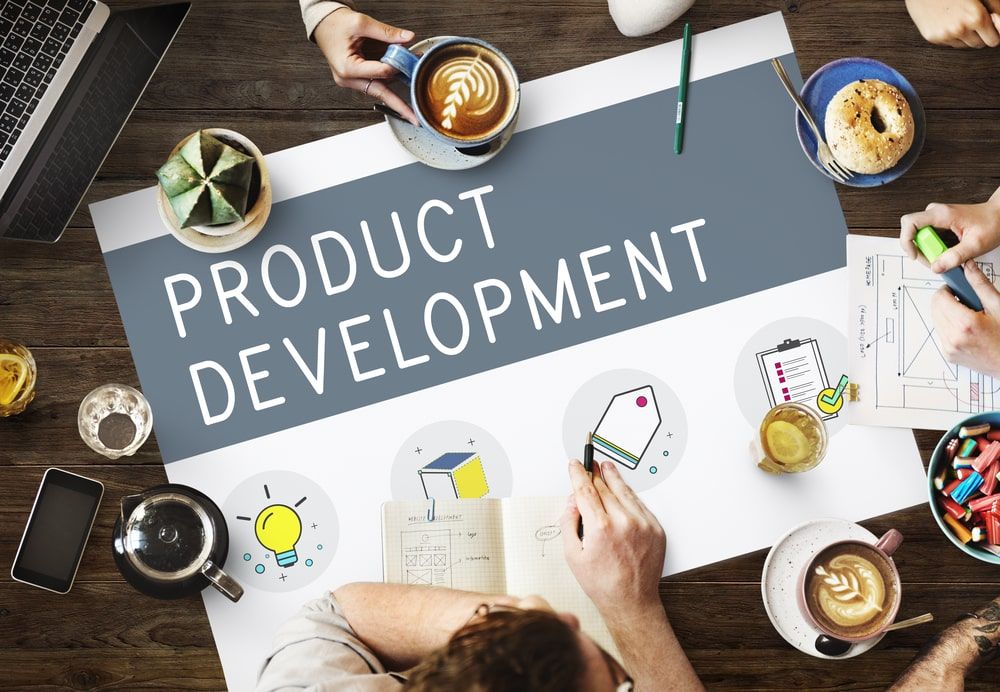In an era of increasingly competitive business, product development is key for companies to stay relevant and grow. A successful product development plan fosters innovation, ensures market acceptance, and adds consumer value, driving business growth through effective strategies.
Through a deep understanding of the importance of product development and the implementation of the right strategies, companies can increase competitiveness, expand market share, and achieve sustainable business growth. Let’s explore the various important aspects of designing and executing a successful product development plan.

Identifying Market Opportunities
The first step in designing an effective product development plan is to identify potential market opportunities. This involves an in-depth analysis of market trends, consumer behavior, and unmet needs. Companies need to conduct comprehensive market research to understand the dynamics of the industry and the preferences of their target audience.
One effective method for identifying market opportunities is to conduct a gap analysis. This technique helps companies identify areas where existing products or services do not fully meet consumer needs. By understanding these gaps, companies can develop products that are more in line with market demand and have a higher potential for success.
Performing Competitor Research and Analysis
After identifying market opportunities, the next step is to conduct in-depth competitor research and analysis. A good understanding of the competitive landscape allows companies to develop products that are unique and have a competitive advantage. This analysis should include an evaluation of the strengths and weaknesses of competitors’ products, as well as the marketing strategies they use.
In conducting competitor analysis, it is important to not only focus on direct competitors, but also consider substitute products and potential new entrants to the market. The information gathered from this analysis can be used to identify gaps in the market that can be filled by the company’s new products. In addition, understanding competitor strategies can help companies design more effective product positioning.
Setting Product Development Goals and Objectives
Set clear goals for product development aligned with the company’s vision and mission to support long-term growth strategies. It is important to ensure that the goals set are SMART (Specific, Measurable, Achievable, Relevant, Time-bound).
Product development goals can cover a variety of aspects, such as increasing market share, diversifying product lines, or increasing profit margins. For example, a technology company might set a goal to launch three innovative products in the next two years that will increase revenue by 25%. By setting specific and measurable goals, companies can more easily evaluate the success of their product development initiatives.
Assembling a Strong Product Development Team
The success of product development depends heavily on the quality of the team that runs it. Building a solid, multidisciplinary product development team is a critical step in turning innovative ideas into successful products in the market. This team should consist of individuals with a variety of skills, including product design, engineering, marketing, and project management.
In addition to having the necessary technical expertise, team members should also have good collaboration and communication skills. This is important to ensure that all aspects of product development can be integrated seamlessly. Companies should also consider involving representatives from various departments, such as sales and customer service, to gain a broader perspective on the development process.
Designing an Efficient Product Development Process
Once the team is formed, the next step is to design an efficient and structured process. This process should encompass all the important stages, from ideation to product launch. One popular methodology in product development is the “Stage-Gate” approach, where the project must pass through a series of “gates” or decision points before moving on to the next stage.
An effective product development process should also be flexible and adaptive to market changes or customer feedback. Implementing Agile methodologies in product development can help companies be more responsive to change and speed up time to market. It is also important to ensure that this process is well documented and communicated to the entire team to ensure consistency and efficiency in its implementation.
Integrating Voice of Customer (VoC)
One of the key elements in successful product development is the integration of Voice of Customer (VoC) into the process. VoC refers to the process of collecting and analyzing customer feedback and preferences to ensure that the product being developed truly meets the needs and wants of the market. Using VoC helps companies reduce the risk of developing products that are not in line with market demand.
There are various methods for collecting VoC, including customer surveys, in-depth interviews, focus groups, and social media analysis. It is important to use a combination of qualitative and quantitative methods to gain a comprehensive understanding of customer needs. Data collected from VoC should be carefully analyzed and integrated into every stage of the process, from conceptualization to product testing.
Closing
An effective product development plan is crucial for driving business growth and maintaining competitiveness. By carefully identifying market opportunities, analyzing competitors, and setting clear goals, companies can ensure that their products align with market needs. Building a strong team and designing a structured yet flexible process further enhances the chances of success.
Integrating the Voice of Customer is essential for creating products that truly resonate with the target market. This customer-centric approach reduces risks and increases the likelihood of market acceptance. Through these strategies, companies can foster innovation, expand their market share, and achieve sustainable long-term growth.